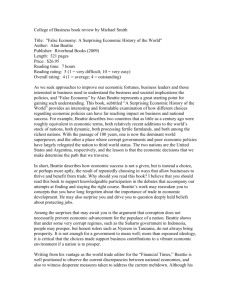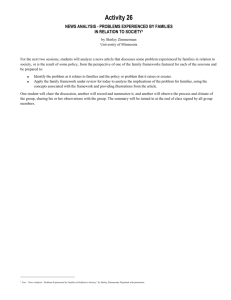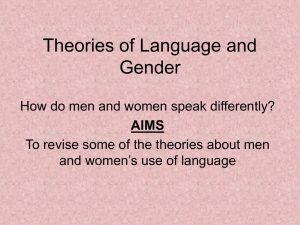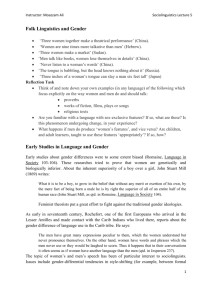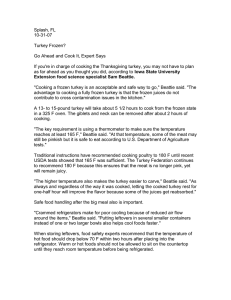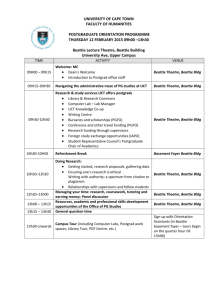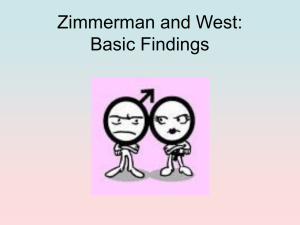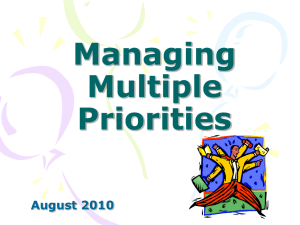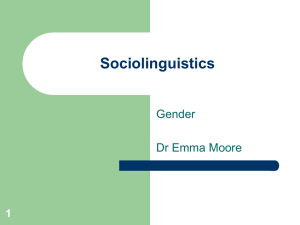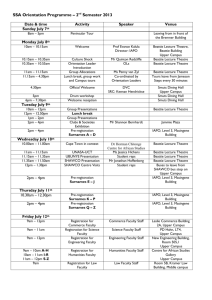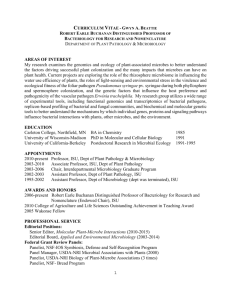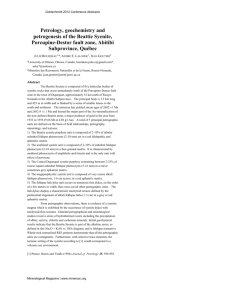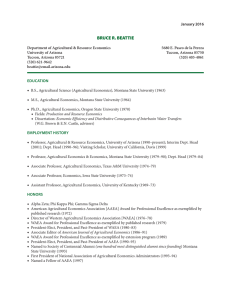A SUMMARY OF GENDER THEORIES
advertisement
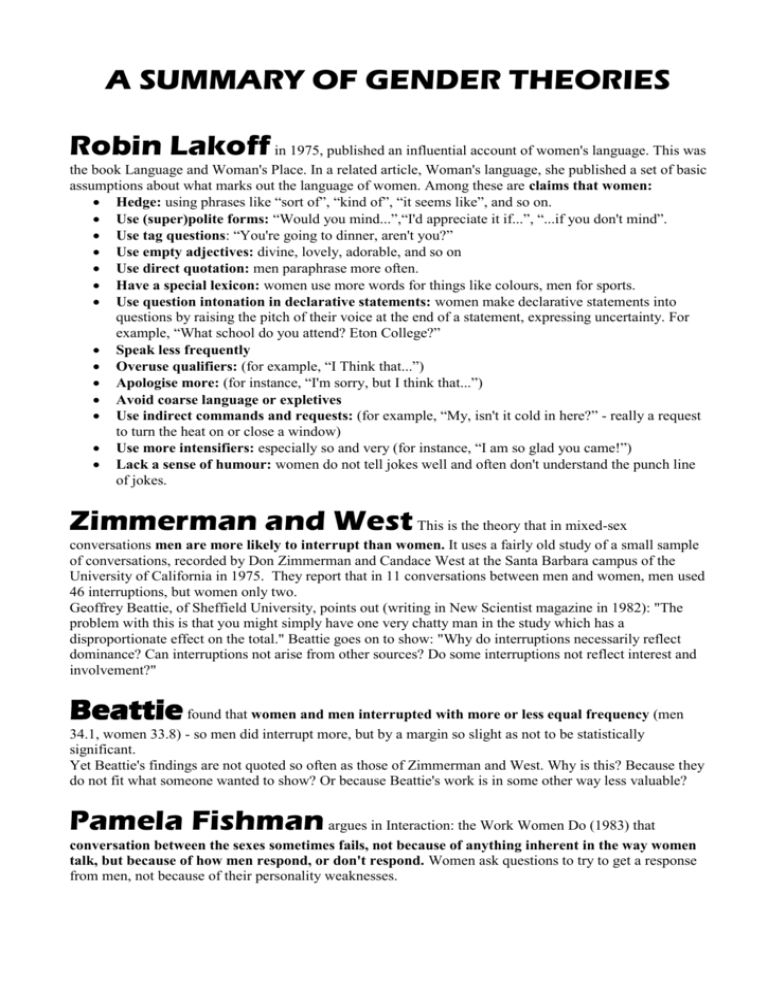
A SUMMARY OF GENDER THEORIES Robin Lakoff in 1975, published an influential account of women's language. This was the book Language and Woman's Place. In a related article, Woman's language, she published a set of basic assumptions about what marks out the language of women. Among these are claims that women: Hedge: using phrases like “sort of”, “kind of”, “it seems like”, and so on. Use (super)polite forms: “Would you mind...”,“I'd appreciate it if...”, “...if you don't mind”. Use tag questions: “You're going to dinner, aren't you?” Use empty adjectives: divine, lovely, adorable, and so on Use direct quotation: men paraphrase more often. Have a special lexicon: women use more words for things like colours, men for sports. Use question intonation in declarative statements: women make declarative statements into questions by raising the pitch of their voice at the end of a statement, expressing uncertainty. For example, “What school do you attend? Eton College?” Speak less frequently Overuse qualifiers: (for example, “I Think that...”) Apologise more: (for instance, “I'm sorry, but I think that...”) Avoid coarse language or expletives Use indirect commands and requests: (for example, “My, isn't it cold in here?” - really a request to turn the heat on or close a window) Use more intensifiers: especially so and very (for instance, “I am so glad you came!”) Lack a sense of humour: women do not tell jokes well and often don't understand the punch line of jokes. Zimmerman and West This is the theory that in mixed-sex conversations men are more likely to interrupt than women. It uses a fairly old study of a small sample of conversations, recorded by Don Zimmerman and Candace West at the Santa Barbara campus of the University of California in 1975. They report that in 11 conversations between men and women, men used 46 interruptions, but women only two. Geoffrey Beattie, of Sheffield University, points out (writing in New Scientist magazine in 1982): "The problem with this is that you might simply have one very chatty man in the study which has a disproportionate effect on the total." Beattie goes on to show: "Why do interruptions necessarily reflect dominance? Can interruptions not arise from other sources? Do some interruptions not reflect interest and involvement?" Beattie found that women and men interrupted with more or less equal frequency (men 34.1, women 33.8) - so men did interrupt more, but by a margin so slight as not to be statistically significant. Yet Beattie's findings are not quoted so often as those of Zimmerman and West. Why is this? Because they do not fit what someone wanted to show? Or because Beattie's work is in some other way less valuable? Pamela Fishman argues in Interaction: the Work Women Do (1983) that conversation between the sexes sometimes fails, not because of anything inherent in the way women talk, but because of how men respond, or don't respond. Women ask questions to try to get a response from men, not because of their personality weaknesses. Deborah Tannen has summarized her book You Just Don't Understand in an article in which she represents male and female language use in a series of six contrasts. These are: Status vs. support Independence vs. intimacy Advice vs. understanding Information vs. feelings Orders vs. proposals Conflict vs. compromise In each case, the male characteristic (that is, the one that is judged to be more typically male) comes first. What are these distinctions? See the extra sheet! Peter Trudgill made a detailed study in which subjects were grouped by social class and sex. He invited them to speak in a variety of situations, before asking them to read a passage that contained words where the speaker might use one or other of two speech sounds. An example would be verbs ending in -ing, where Trudgill wanted to see whether the speaker dropped the final g and pronounced this as -in'. Trudgill found that men were less likely and women more likely to use the prestige pronunciation of certain speech sounds. In aiming for higher prestige (above that of their observed social class) the women tended towards hypercorrectness. The men would often use a low prestige pronunciation - thereby seeking covert (hidden) prestige by appearing “tough” or “down to earth”. Jennifer Coates looks at all-female conversation and builds on Deborah Tannen's ideas. She argues that all-woman conversation can fall into one of the following categories: House Talk - its distinguishing function is the exchange of information and resources connected with the female role as an occupation. Scandal - a considered judging of the behaviour of others, and women in particular. It is usually made in terms of the domestic morality, of which women have been appointed guardians. Bitching - this is the overt expression of women’s anger at their restricted role and inferior status. They express this in private and to other women only. The women who bitch are not expecting change; they want only to make their complaints in an environment where their anger will be understood and expected. Chatting - this is the most intimate form of gossip, a mutual self-disclosure, a transaction where women use to their own advantage the skills they have learned as part of their job of nurturing others. Deborah Cameron says women have been instructed in the proper ways of talking just as they have been instructed in the proper ways of dressing, in the use of cosmetics, and in other “feminine” kinds of behaviour. This acceptance of a “proper” speech style, Cameron describes (in her 1995 book of the same name) as “verbal hygiene”. Gareth Davies said that if you spend your whole exam answer just listing theories and not discussing the data he will come after you with a heavy shovel. Too many candidates have spent the whole exam hour talking about the arguments between Zimmerman, West and Beatie and have done badly. The examiner always takes care to say this is not a sociology exam. Spend less time learning the names – though it is nice to be able to throw these in – and focus on the ideas, which are in bold, and apply them to the data. And do some revision!
